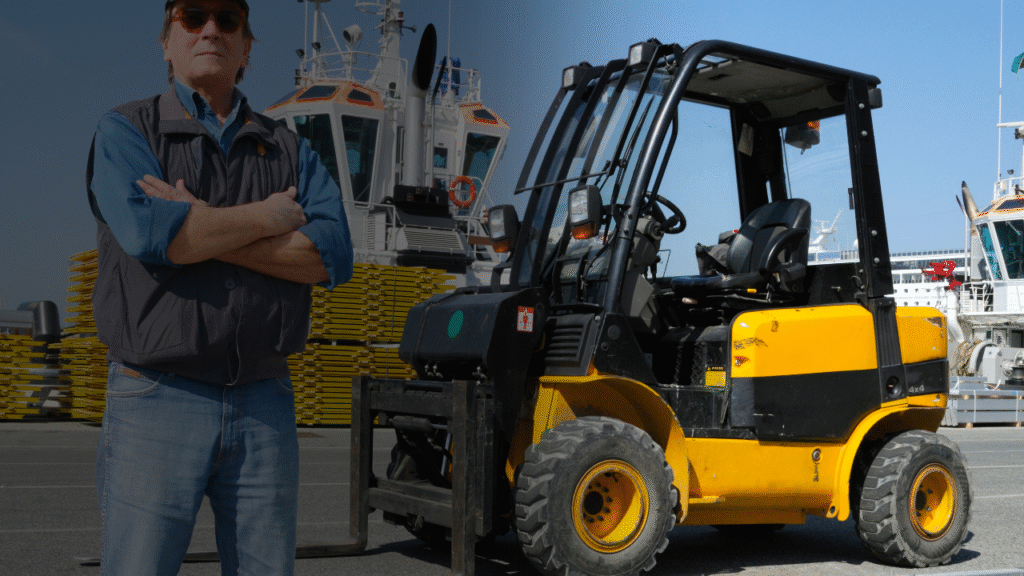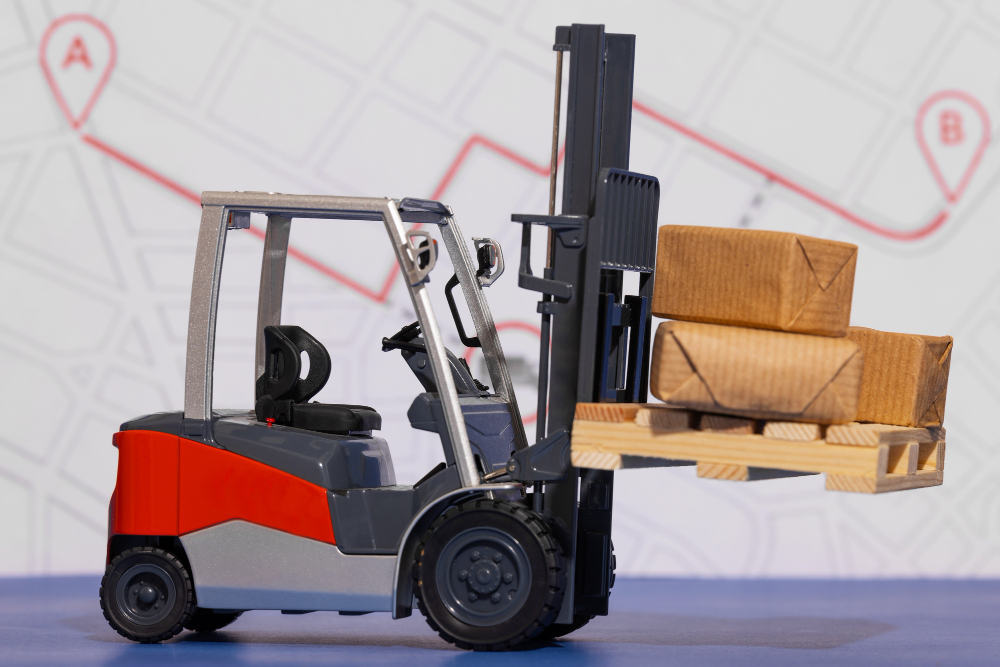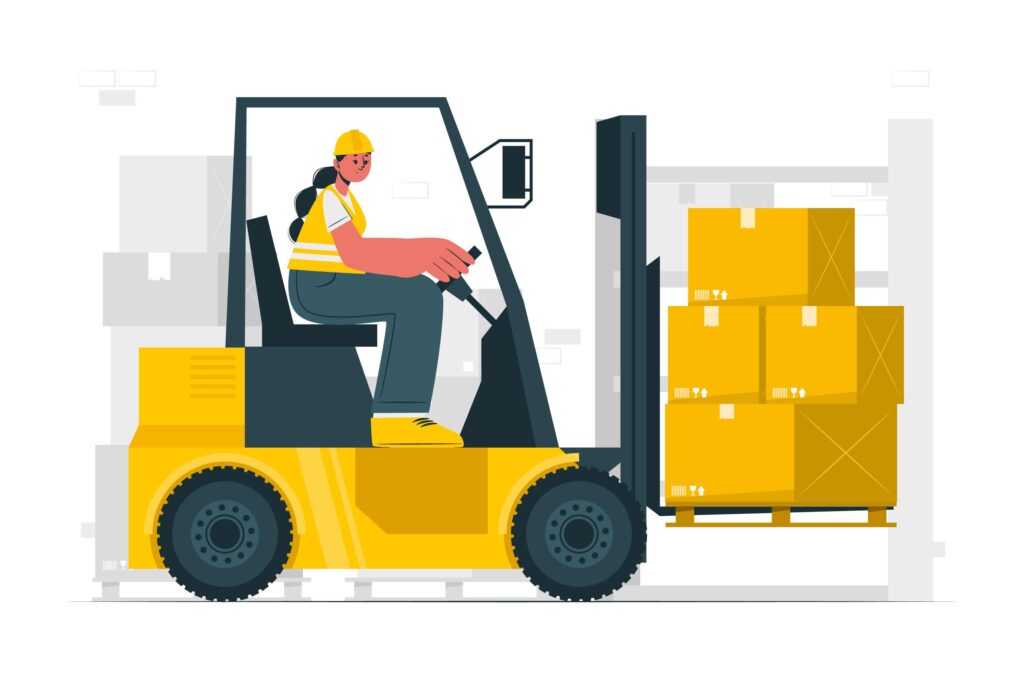When Was the Forklift Invented?
The forklift, a necessary piece of equipment in the transportation of goods and handling of materials, essentially saved the industrial and warehousing sectors as well as the entire distribution and supply chain after it was invented in the early 20th century. Forklifts history, the main contributors to its invention, the first steps of its journey, and its evolution to the modern-day warehouse operations are what we will briefly summarize.
Early Origins: Predecessors to the Modern Forklift
Back in the late 19th and early 20th centuries, the idea for the forklift was basically to find a quicker way to handle the heavy loads that were going to be typical of the industrial world. At the start, manually powered hoists and easy platform trucks were the first steps towards the forklifts we have today.
- 1906: The Pennsylvania Railroad came up with battery-powered platform trucks to take luggage at their Altoona, Pennsylvania, station. It was quite a debut for the use of load transportation with mechanical aid, however, these machines were only capable of moving cargo, not lifting it.
The Pioneering Years: Clarke’s Tructractor (1917)
- 1917: The real breakthrough was the development “Tructractor”, by Clark Material Handling Company, considered as the first internal combustion-powered industrial truck of the true breakthrough came when the Clark Material Handling Company developed the “Tructractor,” regarded as the first internal combustion-powered industrial truck.
- A vehicle for their own factory in Buchanan, Michigan, was this first one a seated counterbalance lift truck, thus a change from manual to powered rollout was indicated. Although at first, the Tructractor was not equipped with forks, it became the basis of all modern forklift designs.
- Due to the immediate success of The Tructractor among other manufacturers, Clark started to produce it in large quantities, delivering various industries and helping the progress towards modern lift equipment to accelerate.
Rise of the Forks: Yale’s Innovation (1923)
- 1923: A major evolutionary step was the introduction of the first electrically powered forklift with a mast and forks by Yale & Towne Manufacturing. In comparison to the previously used flatbed trucks, the new machine was able to lift items vertically, which was a very important function for forklifts. Through its ratchet and pinion system the forks could be elevated even to a height greater than that of the vehicle thus allowing for vertical storage and efficient use of the warehouse space.
Forklift Advancements in the 1920s and Beyond
- 1924: Expanding on the vertical lifting exemplary model, Clark created the “Duat Tractor”, which was the very first gas-powered forklift with forks and mast. By doing so, he basically cemented the fundamental features of today’s forklifts.
- The 1920s saw the installation of hydraulic lifts which gave more lifting power and made the process more efficient.
- The use of forklifts became more prevalent as the development of standardized pallets in the 1930s made it possible for goods to be handled in an organized and efficient manner.
Wartime Demand and Innovation
- The use of forklifts was greatly accelerated and revolutionized through the two World Wars (I and II). The lack of labor and the necessity to transport huge volumes of materials quickly and efficiently made forklifts a major part of the logistics and manufacturing sectors, not only in the United States but also in other parts of the world.
- The period after World War II was marked by changes such as the introduction of narrow-aisle reach trucks that transformed the way warehouses functioned, giving them the opportunity to store higher and more compactly
Safety and Ergonomics
- Forklifts were lifting heavier and heavier loads to taller and taller heights during the 1950s and 1960s, so safety features like operator cages (overhead guards), load backrests, and ergonomic controls were introduced as standard equipment to help avoid the occurrence of accidents at the workplaces.
Continued Technological Growth
- 1970s-1990s: The industry came up with several new ideas one of which was an electric forklift that could emit less gas and had better operator ergonomics. The implementation of environmental standards brought about the use of AC-powered forklifts as well as the development of fuel cell technology, both of which are still advancing.
- Eventually, the forklift business went worldwide, with the top manufacturers taking the industry to the next level and selling almost a million machines annually, thus, facilitating the growth of a multi-billion-dollar market.
Who Invented the Forklift?
It would be incorrect to say that the forklift was designed by only one man. It took a lot of innovations and changes over several years to the design till it got its present form. Nevertheless, the following events and people are the most important ones by far:
- Eugene Clark (Clark Material Handling Company, 1917): Made the Tructractor known as the first industrial truck with internal combustion.
- Yale & Towne Manufacturing (1923): Created the first electric forklift with a mast and forks, the basic features for the present-day forklift were established.
Timeline of Significant Forklift Invention Milestones
| Year | Milestone/Event | Company/Inventor |
| 1906 | Battery-powered platform trucks for luggage movement | Pennsylvania Railroad |
| 1913 | Experiments with vertical and horizontal handling in material transport | Various |
| 1917 | First internal combustion Tructractor for material handling | Clark Material Handling Company |
| 1923 | First electric forklift with forks and a mast | Yale & Towne Manufacturing |
| 1924 | First internal combustion forklift with forks and mast (Duat Tractor) | Clark Material Handling Company |
| 1930s | Introduction of standardized pallets | Industry-wide |
| 1950s | Introduction of operator cages, load backrests, and ergonomics | Industry-wide |
| 1980s+ | Environmental and technological advancements (AC power, fuel cells, etc.) | Industry-wide |
Conclusion: Lasting Impact of the Forklift
The creation of the forklift radically changed the entire supply chain industry, the warehousing field, and the manufacturing sector, as the forklifts provided load handling at a very high speed, and safety and efficiency were also ensured.
The forklift has been a showcase for human creativity and the perpetual ambition for the optimization of the handling of materials through the development of the simple platform trucks in the early 1900s to the present-day sophisticated machines, which feature electronic controls and zero-emission designs.
If someone was interested in the date of the forklift invention, the identity of the forklift inventor, or the forklifts’ story of transformation, they would be moving from the Clark Tructractor of 1917 towards the present day advanced, environmentally friendly machines.



